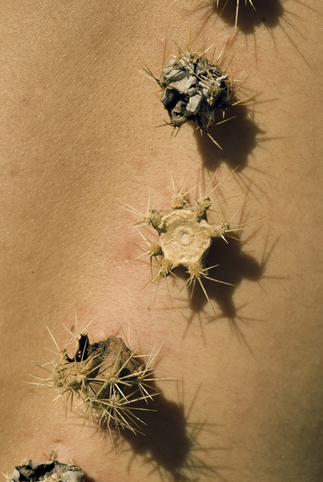 Can you share your personal story and how it connects to your art practice? I grew up on the US/Mexico border and have lived on both sides of the fence: in Douglas, Arizona and Agua Prieta, Sonora. My family and I have lived primarily in Douglas. We lived in Agua Prieta during my middle school years and I always remember how often we would cross back and forth, sometimes 2 to 3 times a day. We were "regulars" at the port, my mom’s name and car were known by the majority of the custom agents, and we definitely had our favorite agents whom we hoped would "check" us. Rather than the questioning being about why we were crossing or what we were bringing back, the interaction was more about how our weekend was, or how the agent’s parents were doing and vice versa. At the age of twelve the experience of living the border daily was not only mundane and routine, but it involved friendly interactions and relationships with federal agents. For my brother and me, it was a game of whose turn it was to pick the lane and guess which agents would be waiting for us. Fast-forward to 2005, which is the year I moved to Phoenix to pursue a degree and career in art: I found out quickly that my experience of the border was incredibly different from the perception of the people around me. My art practice became rooted in my quest not only to change that often negative perception, but to expose it. What are the themes of your artwork, and why do you choose them? The themes of my work range from feminist perspectives, life as a border citizen and, at times, a combination of the two. These themes chose me because they define me as a female who has grown up atop a geopolitical boundary too often used as political fodder and not regarded enough for its fertile, rich and vibrant culture, people and scenery. As an artist, I can have a voice in the public sphere that makes visual what the border means to me. What I love about making art about the border is that it's not only about Douglas and Agua Prieta, but it can mean something to folks living on another border somewhere else in the world. I hope the meaning can transcend geography, cultures and ideologies. Do you think there is a unique aesthetic and artistic movement in Arizona? Yes, I think there is a movement in Arizona. To me, the movement is about the simple fact that we're all the same, fence or no fence. Whether you are from that side or this side, it shouldn't matter, and it shouldn't give us the right to act unjustly to one another. The aesthetic movement has recently been about the border fence, which speaks volumes for a community like Douglas, as we're in the process of redefining who we are as a city and globally-relevant place. If you consider the recent work of Postcommodity, Ana Teresa Fernandez, Gretchen Baer and Aspir JHF, all of them used the physical fence as material to create art. The themes of these works are about remembering and imagining a time when the fence was non-existent, and the way in which we are connected not only through blood, but also through symbols and systems like capitalism. Artists want the world to know we are the same on both sides of the fence. In many cases we are literally family, and many people are disregarding history and where they came from at a time when we are bombarded by negative rhetoric surrounding our community. I feel artists are stepping up to represent this sentiment, which not only holds regard for the battles we're as facing as a border community, but also the battle that indigenous people and minorities are facing in the U.S. and abroad. What projects are you working on now? What can we expect to see from you in 2016? The Mexican Woman's Post Apocalyptic Survival Guide in the Southwest: Food, Clothing, Shelter, y La Migra is the newest project I am working on, which is a multiphase piece that consists of large-format photographs of 12 women who live in Agua Prieta, Sonora, and who are part of the non-profit organization DouglaPrieta. These women are experts on living sustainable lifestyles: they run a communal garden, raise livestock, make clothing, produce bricks for building --all while living on the outskirts of a highly-militarized border. The second phase of the project will be a how-to book co-produced by the participating women. This project is supported in part by an Artist Research and Development Grant from the Arizona Commission on the Arts. How do you feel that art can create or support social change? Art supports social change. Actually, it creates social change. That's something I think many artists imagine. That's what keeps us doing what we do. At the end of the day, if our art sparks an out-of-the-norm conversation or inspires a new perspective, I think that's great in and of itself. In my opinion, as artists in this technological generation that is hyper-connected, so many of us feel responsible to change the world. I believe in the power of numbers and consistency: if you have a message, find 100 ways to say it, and then invite someone else to say it with you.
1 Comment
2/1/2023 11:06:24 am
Nice blog you have here thanks for sharing this
Reply
Leave a Reply. |
Banner photo by:
Carlos Antonio
|


 RSS Feed
RSS Feed